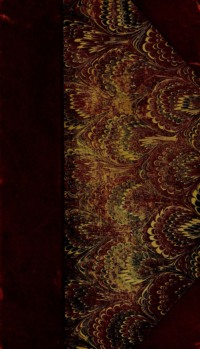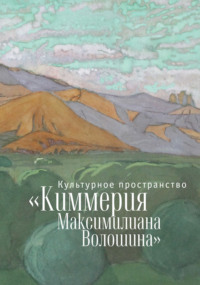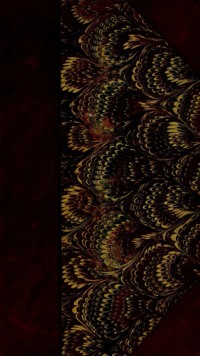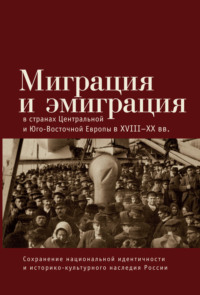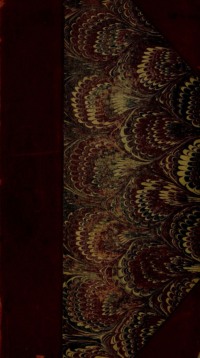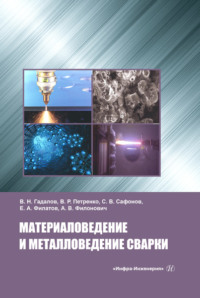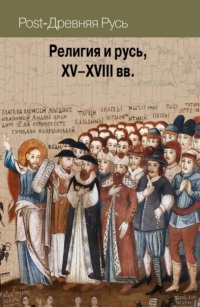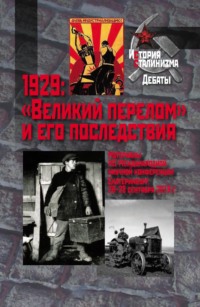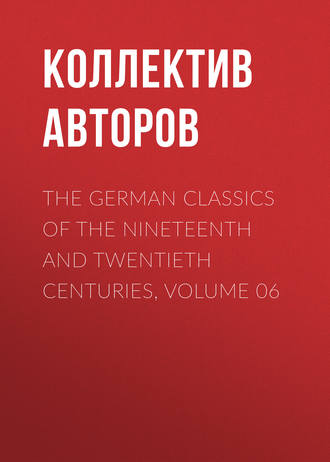 полная версия
полная версияThe German Classics of the Nineteenth and Twentieth Centuries, Volume 06

The German Classics of the Nineteenth and Twentieth Centuries, Volume 06 / Masterpieces of German Literature Translated into English. in Twenty Volumes
THE LIFE OF HEINRICH HEINE
BY WILLIAM GUILD HOWARD, A.MAssistant Professor of German, Harvard UniversityIThe history of German literature makes mention of few men more self-centered and at the same time more unreserved than Heinrich Heine. It may be said that everything which Heine wrote gives us, and was intended to give us, first of all some new impression of the writer; so that after a perusal of his works we know him in all his strength and weakness, as we can know only an amiable and communicative egotist; moreover, besides losing no opportunity for self-expression, both in and out of season, Heine published a good deal of frankly autobiographical matter, and wrote memoirs, only fragments of which have come down to us, but of which more than has yet appeared will perhaps ultimately be made accessible. Heine's life, then, is to us for the most part an open book. Nevertheless, there are many obscure passages in it, and there remain many questions not to be answered with certainty, the first of which is as to the date of his birth. His own statements on this subject are contradictory, and the original records are lost. But it seems probable that he was born on the thirteenth of December, 1797, the eldest child of Jewish parents recently domiciled at Düsseldorf on the Rhine.
The parentage, the place, and the time were almost equally significant aspects of the constellation under which young Harry Heine—for so he was first named—began his earthly career. He was born a Jew in a German city which, with a brief interruption, was for the first sixteen years of his life administered by the French. The citizens of Düsseldorf in general had little reason, except for high taxes and the hardships incident to conscription in the French armies, to complain of the foreign dominion. Their trade flourished, they were given better laws, and the machinery of justice was made much less cumbersome than it had been before. But especially the Jews hailed the French as deliverers; for now for the first time they were relieved of political disabilities and were placed upon a footing of equality with the gentile population. To Jew and gentile alike the military achievements of the French were a source of satisfaction and admiration; and when the Emperor of the French himself came to town, as Heine saw him do in 1810, we can easily understand how the enthusiasm of the boy surrounded the person of Napoleon, and the idea that he was supposed to represent, with a glamor that never lost its fascination for the man. To Heine, Napoleon was the incarnation of the French Revolution, the glorious new-comer who took by storm the intrenched strongholds of hereditary privilege, the dauntless leader in whose army every common soldier carried a field marshal's baton in his knapsack. If later we find Heine mercilessly assailing the repressive and reactionary aristocracy of Germany, we shall not lightly accuse him of lack of patriotism. He could not be expected to hold dear institutions of which he felt only the burden, without a share in the sentiment which gives stability even to institutions that have outlived their usefulness. Nor shall we call him a traitor for loving the French, a people to whom his people owed so much, and to whom he was spiritually akin.
French influences, almost as early as Hebrew or German, were among the formative forces brought to bear upon the quick-witted but not precocious boy. Heine's parents were orthodox, but by no means bigoted Jews. We read with amazement that one of the plans of the mother, ambitious for her firstborn, was to make of him a Roman Catholic priest. The boy's father, Samson Heine, was a rather unsuccessful member of a family which in other representatives—particularly Samson's brother Salomon in Hamburg—attained to wealth and prominence in the world of finance.
Samson Heine seems to have been too easy-going, self-indulgent, and ostentatious, to have made the most of the talents that he unquestionably had. Among his foibles was a certain fondness for the pageantry of war, and he was in all his glory as an officer of the local militia. To his son Gustav he transmitted real military capacity, which led to a distinguished career and a patent of nobility in the Austrian service. Harry Heine inherited his father's more amiable but less strenuous qualities. Inquisitive and alert, he was rather impulsive than determined, and his practical mother had her trials in directing him toward preparation for a life work, the particular field of which neither she nor he could readily choose. Peira, or Betty, Heine was a stronger character than her husband; and in her family, several members of which had taken high rank as physicians, there had prevailed a higher degree of intellectual culture than the Heines had attained to. She not only managed the household with prudence and energy, but also took the chief care of the education of the children. To both parents Harry Heine paid the homage of true filial affection; and of the happiness of the home life, The Book Le Grand and a number of poems bear unmistakable witness. The poem "My child, we were two children" gives a true account of Harry and his sister Charlotte at play.
In Düsseldorf, Heine's formal education culminated in attendance in the upper classes of a Lyceum, organized upon the model of a French Lycée and with a corps of teachers recruited chiefly from the ranks of the Roman Catholic clergy. The spirit of the institution was rationalistic and the discipline wholesome. Here Heine made solid acquisitions in history, literature, and the elements of philosophy. Outside of school, he was an eager spectator, not merely of stirring events in the world of politics, but also of many a picturesque manifestation of popular life—a spectator often rather than a participant; for as a Jew he stood beyond the pale of both the German and the Roman Catholic traditions that gave and give to the cities of the Rhineland their characteristic naïve gaiety and harmless superstition. Such a poem as The Pilgrimage to Kevlaar would be amazing as coming from an unbeliever, did we not see in it evidence of the poet's capacity for perfect sympathetic adoption of the spirit of his early environment. The same is true of many another poetic expression of simple faith, whether in Christianity or in the mythology of German folk-lore.
Interest in medieval Catholicism and in folk-lore is one of the most prominent traits in the Romantic movement, which reached its culmination during the boyhood of Heine. The history of Heine's connection with this movement is foreshadowed by the circumstances of his first contact with it. He tells us that the first book he ever read was Don Quixote (in the translation by Tieck). At about the same time he read Gulliver's Travels, the tales of noble robbers written by Goethe's brother-in-law, Vulpius, the wildly fantastic stories of E.T.A. Hoffmann, Schiller's Robbers; but also Uhland's ballads, and the songs collected by Arnim and Brentano in The Boy's Magic Horn. That is to say: At the time when in school a critical and skeptical mind was being developed in him by descendants of the age of enlightenment, his private reading led him for the most part into the region of romanticism in its most exaggerated form. At the time, furthermore, when he took healthy romantic interest in the picturesque Dusseldorf life, his imagination was morbidly stimulated by furtive visits to a woman reputed to be a witch, and to her niece, the daughter of a hangman. His earliest poems, the Dream Pictures, belong in an atmosphere charged with witchery, crime, and the irresponsibility of nightmare. This coincidence of incompatible tendencies will later be seen to account for much of the mystery in Heine's problematic character.
It having been decided, perhaps because the downfall of Napoleon shut the door of all other opportunity, that Heine should embark upon a mercantile career, he was given a brief apprenticeship, in 1815 at Frankfurt, in the following years at Hamburg, under the immediate patronage of his uncle Salomon who, in 1818, even established the young poet in a dry goods business of his own. The only result of these experiments was the demonstration of Heine's total inaptitude for commercial pursuits. But the uncle was magnanimous and offered his nephew the means necessary for a university course in law, with a view to subsequent practice in Hamburg. Accordingly, after some brushing up of Latin at home, Heine in the fall of 1819 was matriculated as a student at the University of Bonn.
In spite of failure to accomplish his immediate purpose, Heine had not sojourned in vain at Hamburg. He had gained the good will of an opulent uncle whose bounty he continued almost uninterruptedly to enjoy to the end of his days. But in a purpose that lay much nearer to his heart he had failed lamentably; for, always sensitive to the charms of the other sex, Heine had conceived an overpowering passion for his cousin Amalie, the daughter of Salomon, only to meet with scornful rebuffs at the hands of the coquettish and worldly-minded heiress. There is no reason to suppose that Amalie ever took her cousin's advances seriously. Her father certainly did not so take them. On the other hand, there is equally little reason to doubt the sincerity and depth of Heine's feelings, first of unfounded hope, then of persistent despair that pursued him in the midst of other occupations and even in the fleeting joys of other loves. The most touching poems included among the Youthful Sorrows of his first volume were inspired by Amalie Heine.
At Bonn Heine was a diligent student. Though never a roysterer, he took part in various extra-academic enterprises, was a member of the Burschenschaft, that democratic-patriotic organization so gravely suspected by the reactionary governments, and made many friends. He duly studied history and law; he heard Ernst Moritz Arndt interpret the Germania of Tacitus; but more especially did he profit by official and personal relations with A.W. Schlegel, who taught Heine what he himself knew best, namely, the secret of literary form and the art of metrical expression.
The fall of 1820 saw Heine at Göttingen, the Hanoverian university to which, shortly before, the Americans Ticknor and Everett had repaired and at which in that very year Bancroft had attained his degree of doctor of philosophy. Here, however, Heine was repelled by the aristocratic exclusiveness of the Hanoverian squires who gave the tone to student society, as well as by the mummified dryness of the professors. In marked contrast to the patriotic and romantic spirit of Bonn he noted here with amazement that the distinguished Germanist Benecke lectured on the Nibelungenlied to an auditory of nine. His own residence was destined this time to be brief; for serious quarrels coming to the ear of the faculty, he was, on January 23, 1821, advised to withdraw; and in April he enrolled himself as a student at the University of Berlin.
The next three years were filled with manifold activities. As a student Heine was deeply impressed by the absolute philosophy expounded by Hegel; as a Jew he lent a willing hand to the endeavors of an association recently founded for the amelioration of the social and political condition of the Hebrews; in the drawing room of Rahel Levin, now the wife of Varnhagen von Ense, he came in touch with gifted men and women who were ardent admirers of Goethe, and some of whom, a quarter of a century before, had befriended Friedrich Schlegel; and in the subterranean restaurant of Lutter and Wegener he joined in the revels of Hoffmann, Grabbe, and other eccentric geniuses. Heine now began to be known as a man of letters. After having, from 1817 on, printed occasional poems in newspapers and magazines, he published in December, 1821 (with the date 1822), his first volume, entitled simply Poems; he wrote newspaper articles on Berlin and on Poland, which he visited in the summer of 1822; and in the spring of 1823 he published Tragedies together with a Lyrical Intermezzo—two very romantic and undramatic plays in verse, separated in the volume by a short series of lyrical poems.
Meanwhile Amalie Heine had been married and Harry's parents had moved to Lüneburg. Regret for the loss of Amalie soon gave way to a new passion for a very young girl, whose identity remains uncertain, but who was probably Amalie's little sister Therese. In any case, Heine met the new love on the occasion of a visit to Lüneburg and Hamburg in the spring of 1823, and was haunted by her image during the summer spent at Cuxhaven. Here Heine first saw the sea. In less exalted moods he dallied with fisher maidens; he did not forget Amalie; but the youthful grace and purity of Therese dominate most of the poems of this summer. The return from the watering place gave Heine the title The Return Home for this collection of pieces which, when published in 1826, was dedicated to Frau Varnhagen von Ense.
Uncle Salomon, to whom the Tragedies had been affectionately inscribed, was not displeased with the growing literary reputation of his nephew. But he saw no sense in the idea that Heine already entertained of settling in Paris. He insisted that the young man should complete his studies; and so, in January, 1824, Heine once more betook himself to Göttingen, where on the twenty-first of July, 1825, he was duly promoted Doctor utriusque Juris. In the summer of 1824 he made the trip through the Hartz mountains which served as the basis of The Journey to the Hartz; immediately before his promotion he submitted to baptism in the Lutheran church as Christian Johann Heinrich Heine.
Submission is the right word for this conversion. It was an act of expediency such as other ambitious men found unavoidable in those days; but Heine performed it in a spirit of bitterness caused not so much by a sense of apostasy as by contempt for the conventional Christianity that he now embraced. There can be no sharper contrast than that presented by such a poem as The Pilgrimage to Kevlaar and sundry satirical pieces not included in this volume.
Two vacations at Norderney, where Heine renewed and deepened acquaintance with his beloved North Sea, not very resolute attempts to take up the practice of law in Hamburg, a trip to London, vain hopes of a professorship in Munich, a sojourn in Italy, vacillations between Hamburg, Berlin, and the North Sea, complete the narrative of Heine's movements to the end of the first period of his life. He was now Heine the writer: poet, journalist, and novelist. The Journey to the Hartz, first published in a magazine, Der Gesellschafter, in January and February, 1826, was issued in May of that year by Campe in Hamburg, as the first volume of Pictures of Travel, beginning with the poems of The Return Home and concluding with the first group of hymns to the North Sea, written at Norderney in the previous year. Pictures of Travel II, issued in 1827, consisted of the second cycle of poems on the North Sea, an account in prose of life on the island, entitled Norderney, The Book Le Grand, to which epigrams by Immermann were appended, and extracts from Letters from Berlin published in 1822. Pictures of Travel III (1830) began with experiences in Italy, but degenerated into a provoked but ruthless attack upon Platen. Pictures of Travel IV (1831) included English Fragments, the record of Heine's observations in London, and The City of Lucca, a supplementary chapter on Italy. In October, 1827, Heine collected under the title Book of Songs nearly all of his poems written up to that time.
The first period in Heine's life closes with the year 1831. The Parisian revolution of July, 1830, had turned the eyes of all Europe toward the land in which political experiments are made for the benefit of mankind. Many a German was attracted thither, and not without reason Heine hoped to find there a more promising field for the employment of his talents than with all his wanderings he had discovered in Germany. Toward the end of May, 1831, he arrived in Paris, and Paris was thenceforth his home until his death on the seventeenth of February, 1856.
IIIn the preface to the second edition of the Book of Songs, written at Paris in 1837, Heine confessed that for some time past he had felt a certain repugnance to versification; that the poems therewith offered for the second time to the public were the product of a time when, in contrast to the present, the flame of truth had rather heated than clarified his mind; and expressed the hope that his recent political, theological, and philosophical writings—all springing from the same idea and intention as the poems—might atone for any weakness in the poems. Heine wrote poetry after 1831, and he wrote prose before 1831; but in a general way what he says of his two periods is correct: before his emigration he was primarily a poet, and afterwards primarily a critic, journalist, and popular historian. In his first period he wrote chiefly about his own experiences; in his second, chiefly about affairs past and present in which he was interested.
As to the works of the first period, we might hesitate to say whether the Pictures of Travel or the Book of Songs were the more characteristic product. In whichever way our judgment finally inclined, we should declare that the Pictures of Travel were essentially prosified poems and that the poems were, in their collected form, versified Pictures of Travel; and that both, moreover, were dominated, as the writings after 1831 were dominated, by a romantically tinged longing for individual liberty.
The title Pictures of Travel, to which Heine gave so definite a connotation, is not in itself a true index to the multifarious contents of the series of traveler's notes, any more than the volumes taken each by itself were units. Pages of verse followed pages of prose; and in the Journey to the Hartz, verse interspersed in prose emphasizes the lyrical character of the composition. Heine does indeed give pictures of some of the scenes that he visits; but he also narrates his passage from point to point; and at every point he sets forth his recollections, his thoughts, his dreams, his personal reaction upon any idea that comes into his head; so that the substance, especially of the Journey to the Hartz, is less what was to be seen in the Hartz than what was suggested to a very lively imagination; and we admire the agility with which the writer jumps from place to place quite as much as the suppleness with which he can at will unconditionally subject himself to the genius of a single locality. For Heine is capable of writing straightforward descriptive prose, as well-ordered and as matter-of-fact as a narrative of Kleist's. But the world of reality, where everything has an assignable reason for its being and doing, is not the world into which he most delights to conduct us. This world, on the contrary, is that in which the water "murmurs and rustles so wonderfully, the birds pour forth broken love-sick strains, the trees whisper as if with a thousand maidens' tongues, the odd mountain flowers peep up at us as if with a thousand maidens' eyes, stretching out to us their curious, broad, drolly scalloped leaves; the sunrays flash here and there in sport, the herbs, as though endowed with reason, are telling one another their green legends, all seems enchanted"—in other words, a wonderland disturbed by no doubts on the part of a rationalistic Alice. And a further secret of this fascinating, though in the long run exasperating style, is the sublime audacity with which Heine dances now on one foot and now on the other, leaving you at every moment in amused perplexity, whether you shall next find him standing firmly on mother earth or bounding upward to recline on the clouds.
"A mixture of description of nature, wit, poetry, and observation à la Washington Irving" Heine himself called the Journey to the Hartz. The novelty lay in the mixture, and in the fact that though the ingredients are, so to speak, potentized in the highest degree, they are brought to nearly perfect congruence and fusion by the irresistible solvent of the second named. The Journey to the Hartz is a work of wit, in the present sense, and in the older sense of that word. It is a product of superior intelligence—not a Sketch Book, but a single canvas with an infinitude of details; not a Sentimental Journey—although Heine can outdo Sterne in sentimentality, he too persistently outdoes him also in satire—the work, fragmentary and outwardly formless, is in essence thoroughly informed by a two-fold purpose: to ridicule pedantry and philistinism, and to extol nature and the life of those uncorrupted by the world.
A similar unity is unmistakable in the Book of Songs. It would be difficult to find another volume of poems so cunningly composed. If we examine the book in its most obvious aspect, we find it beginning with Youthful Sorrows and ending with hymns to the North Sea; passing, that is to say, from the most subjective to the most objective of Heine's poetic expressions. The first of the Youthful Sorrows are Dream Pictures, crude and grotesque imitations of an inferior romantic genre; the North Sea Pictures are magnificent attempts in highly original form to catch the elusive moods of a great natural element which before Heine had played but little part in German poetry. From the Dream Pictures we proceed to Songs (a very simple love story told in forms as nearly conventional as Heine ever used), to Romances which, with the notable exception of The Two Grenadiers and Belshazzar, are relatively feeble attempts at the objectivation of personal suffering; and thence to Sonnets, direct communications to particular persons. Thereupon follow the Lyrical Intermezzo and the Return Home, each with a prologue and an epilogue, and with several series of pieces which, like the Songs above mentioned, are printed without titles and are successive sentences or paragraphs in the poet's own love story. This he tells over and over again, without monotony, because the story gains in significance as the lover gains in experience, because each time he finds for it a new set of symbols, and because the symbols become more and more objective as the poet's horizon broadens. Then come a few pieces of religious content (culminating in The Pilgrimage to Kevlaar), the poems in the Journey to the Hartz (the most striking of which are animated by the poetry of folk-lore)—these poems clearly transitional to the poetry of the ocean which Heine wrote with such vigor in the two cycles on the North Sea. The movement is a steady climax.
The truth of the foregoing observations can be tested only by an examination of the entire Book of Songs. The total effect is one of arrangement. The order of the sections is chronological; the order of the poems within the sections is logical; and some poems were altered to make them fit into the scheme. Each was originally the expression of a moment; and the peculiarity of Heine as a lyric poet is his disposition to fix a moment, however fleeting, and to utter a feeling, of however slight consequence to humanity it might at first blush seem to be. In the Journey to the Hartz he never lost an opportunity to make a point; in his lyrical confessions he suppressed no impulse to self-revelation; and seldom did his mastery of form fail to ennoble even the meanest substance.
Some of Heine's most perfect products are his smallest. Whether, however, a slight substance can be fittingly presented only in the briefest forms, or a larger matter calls for extended treatment, the method is the same, and the merit lies in the justness and suggestiveness of details. Single points, or points in juxtaposition or in succession, not the developed continuity of a line, are the means to the effect which Heine seeks. Connecting links are left to be supplied by the imagination of the reader. Even in such a narrative poem as Belshazzar the movement is staccato; we are invited to contemplate a series of moments; and if the subject is impiety and swift retribution, we are left to infer the fact from the evidence presented; there is neither editorial introduction nor moralizing conclusion. Similarly with The Two Grenadiers, a presentation of character in circumstance, a translation of pictorial details into terms of action and prophecy; and most strikingly in The Pilgrimage to Kevlaar, a poem of such fundamentally pictorial quality that it has been called a triptych, three depicted scenes in a little religious drama.


